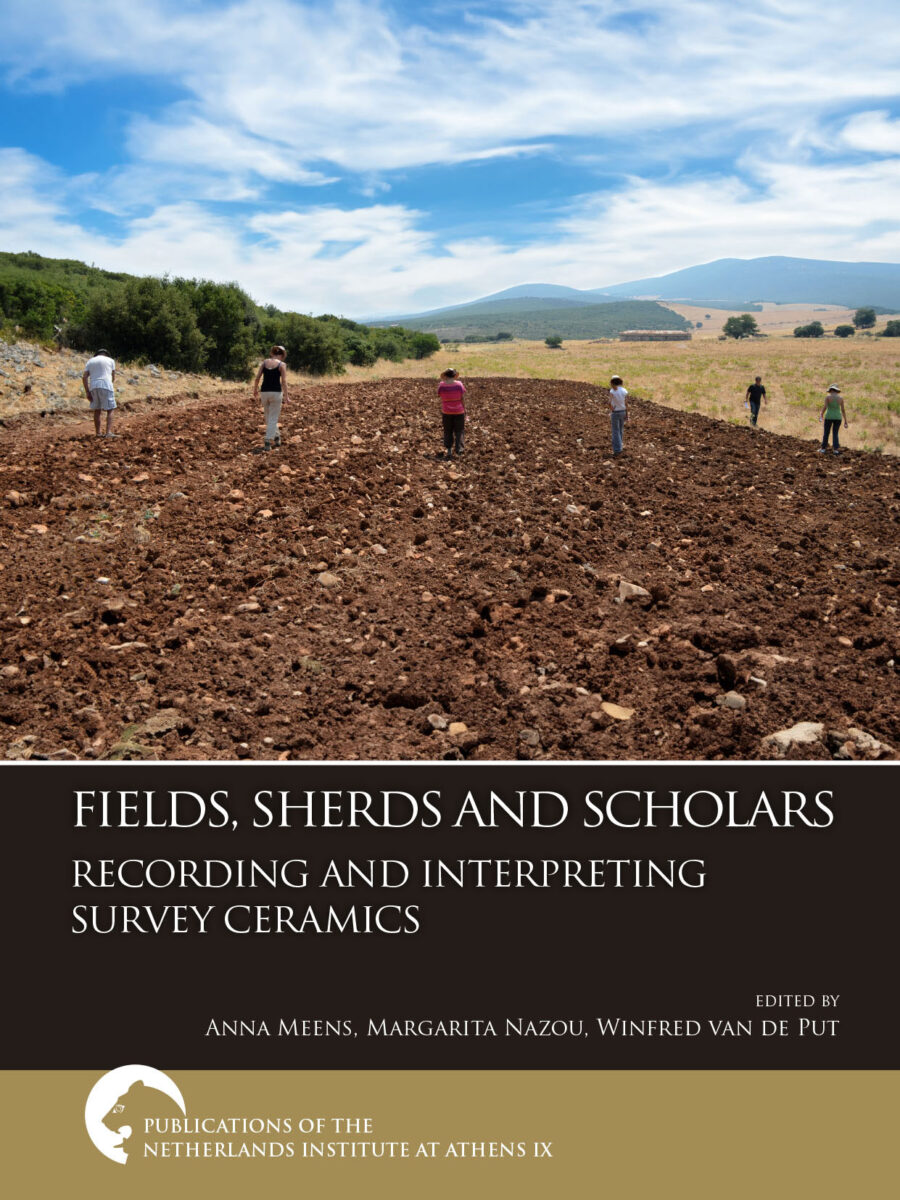Book presentation at the NIA of ‘Fields, Sherds and Scholars, Recording and Interpreting Survey Ceramics’ which is Volume IX of the series:
‘Publications of the Netherlands Institute at Athens’.
The book will be presented by its’ editors:
Dr. Anna Meens, Dr. Margarita Nazou, and Dr. Winfred van de Put
This book is a significant contribution to the field of survey pottery studies, which is
not frequently theorized, and could also serve as a guide and provide inspiration to
archaeologists designing their own survey projects and methodologies.
Landscape archaeology has heavily relied on pedestrian survey as a field method for
more than half a century. In most field projects, archaeological ceramics constitute the
lion’s share among the finds and the amount of collected sherds is overwhelming.
Survey ceramics provide the basis for understanding human activity in a landscape, and
sherds serve as convenient chronological markers for the archaeological sites
discovered in field projects. However, how this pottery is collected and studied
determines the possibilities for using the sherds as a source material. Not only the
collection practices, but also the process and practicalities of ceramic analysis are rarely
made explicit, even though the archaeological interpretations of human activity in the
landscape strongly rely on it.
Most contributions in this volume provide an insight in collection, processing and
interpretation practices in a specific survey project, and we hope this transparency is
inspiring and contributes to a better understanding of surface ceramics as a basis for
historical interpretations. Three themes run as a red thread through the contributions in
this book: first of all transparency in ceramic collecting, processing and interpretation,
secondly, improving diagnosticity, and thirdly, expanding the interpretive potential of
survey ceramics.
The chapters are geographically oriented towards Greece, Italy and Spain, three
countries in which archaeological surface survey is widely practiced. Chronologically,
the contributions range from the Final Neolithic to the Medieval period.
For physical attendance please register at: [email protected]
The event will also be live-streamed, please click here for registration.
